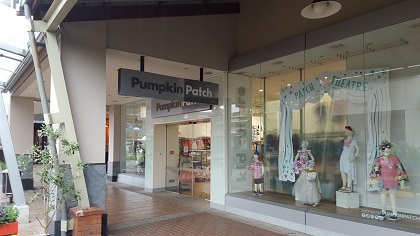
The children’s wear chain Pumpkin Patch, which had its head quarters in East Tamaki and a store in Botany, has been sold to Aussie online retailer Catch Group for an undisclosed sum.
Receivers Brendon Gibson and Neale Jackson of KordaMentha have confirmed the Pumpkin Patch brand and intellectual property assets were snapped up by the Australian eCommerce group.
Gibson said the sale was good news for the many fans of the much-loved brand.
“We are pleased to have been able to successfully complete a transaction that will see the Pumpkin Patch brand resurrected online in both New Zealand and Australia,” he said.
Nati Harpaz, CEO of the Catch Group said the purchase of intellectual property assets included product designs and innovations.
“We will be relaunching this iconic brand shortly with a wide variety of new and much-loved designs,” Harpaz said in a media release.
“We also intend to invest in expanding product lines for mums, kids and babies.”

Catch Group has a range of shopping websites in Australia including www.catchoftheday.com.au, www.mumgo.com.au and www.scoopon.com.au.
Pumpkin Patch shut its doors for the last time just a few weeks ago.
A receivers’ report showed the NZ X-listed company, which was put into receivership in October, owed $59.5m, chiefly to the ANZ.
In January the Times reported preferred creditors, largely the 1600 staff it employed in the lead-up to its receivership, were still owed $2.7m by the company.
Pumpkin Patch began with one store and a mail order catalogue in 1991 and subsequently grew to have 190 stores worldwide and supplied retail groups David Jones in Australia, Nordstrom in the US and Jawad in the Middle East,” according to the company’s NZX blurb.
Given the uncertain economic situation in 2011-2012, Pumpkin Patch decided to close down the United States and United Kingdom retail operations. Over the process of closure, Pumpkin Patch identified alternative wholesale/franchise and online opportunities for its brands in those markets.
The company, whose shares were listed in June 2004, entered into a relationship in 2012 with global online retailer Amazon to sell Pumpkin Patch products via Amazon’s websites in the United Kingdom, France and Germany.
The company continued to struggle. The enormity of the obstacles facing Pumpkin Patch was touched upon in an overview of Pumpkin Patch’s half year results, released last September:
“There were a number of factors causing the decline in sales and earnings including store closures and currency effects but the main factor was a decline in the international wholesale business and related northern hemisphere online channels, these having been important profit contributors historically,” it said.











